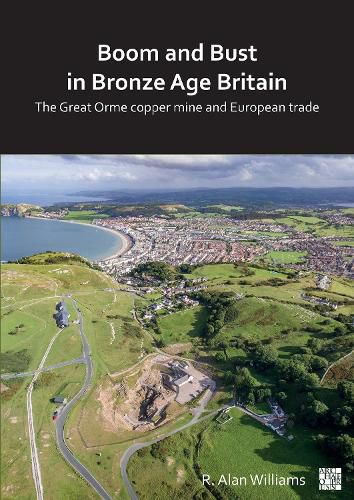Readings Newsletter
Become a Readings Member to make your shopping experience even easier.
Sign in or sign up for free!
You’re not far away from qualifying for FREE standard shipping within Australia
You’ve qualified for FREE standard shipping within Australia
The cart is loading…






The Great Orme copper mine on the coast of north Wales is one of the largest surviving Bronze Age mines in Europe. But where did all the copper go? Until now this remained something of a mystery. It was claimed in the 1990s that the mine only produced a low impurity type of copper that was uncommon in the British Bronze Age. These claims had marginalised the mine as an unimportant copper source, whose extensive workings were explained away as being merely the result of small-scale workings over nearly a thousand years. However, the results of this new interdisciplinary research, which combines archaeological and geological knowledge with the latest scientific analytical methods, radically changes that picture. This new evidence reveals a copper mine of European importance, which dominated Britain's copper supply for two centuries (c. 1600-1400 BC), with some metal reaching mainland Europe - from Brittany to as far as the Baltic. This zenith period of large-scale production is very likely to have required a full-time mining community at the mine, possibly supported or controlled by the agriculturally richer area of northeast Wales with its strategic links into wider communication networks. Overall, the new evidence suggests that Britain was far more integrated into European trade/exchange networks than was previously suspected. Once the richest parts of the mine were exhausted, there followed a twilight period of minor production that lasted several centuries.
$9.00 standard shipping within Australia
FREE standard shipping within Australia for orders over $100.00
Express & International shipping calculated at checkout
The Great Orme copper mine on the coast of north Wales is one of the largest surviving Bronze Age mines in Europe. But where did all the copper go? Until now this remained something of a mystery. It was claimed in the 1990s that the mine only produced a low impurity type of copper that was uncommon in the British Bronze Age. These claims had marginalised the mine as an unimportant copper source, whose extensive workings were explained away as being merely the result of small-scale workings over nearly a thousand years. However, the results of this new interdisciplinary research, which combines archaeological and geological knowledge with the latest scientific analytical methods, radically changes that picture. This new evidence reveals a copper mine of European importance, which dominated Britain's copper supply for two centuries (c. 1600-1400 BC), with some metal reaching mainland Europe - from Brittany to as far as the Baltic. This zenith period of large-scale production is very likely to have required a full-time mining community at the mine, possibly supported or controlled by the agriculturally richer area of northeast Wales with its strategic links into wider communication networks. Overall, the new evidence suggests that Britain was far more integrated into European trade/exchange networks than was previously suspected. Once the richest parts of the mine were exhausted, there followed a twilight period of minor production that lasted several centuries.